How to move your iPhone or iPad backups to an external hard drive
Give me some space.
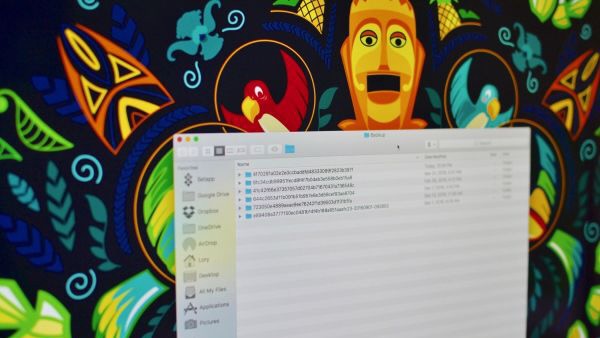
Using an external hard drive to backup your iPhone or iPad is a great way to save some space on your Mac. However, managing storage on your Mac can be tricky, especially considering the price of SSDs.
In this how-to guide, we’ll teach you how to move your iOS backups to an external hard drive so that you can save some extra space on your Mac.
Note: This guide is for people who back up their iPhone or iPad using a computer, not through iCloud. It works with macOS Monterey and later.
What are these backup files, and why are they taking up so much space?
When you back up your mobile device using your computer, the backup is stored on your Mac. The location of the backups is in a folder called MobileSync, and sometimes it gets pretty big, especially if you are syncing multiple devices. Old backups are replaced with new ones, but families with multiple devices backed up to one computer will take up a lot of storage space.
We highly recommend syncing on iCloud and then deleting the backups on your Mac rather than relocating them. It's a better, more straightforward option, but you might need to buy extra iCloud storage.
If you're considering using iCloud, here's how to choose which iCloud storage plan you should get. If you're still bent on moving them to an external hard drive, we're here to help.
Step 1: Locate your backups
This part is easy. Your backups are stored in a MobileSync folder. You can find them by typing ~/Library/Application Support/MobileSync/Backup into Spotlight. You can also find the backups for specific devices from Finder.
Master your iPhone in minutes
iMore offers spot-on advice and guidance from our team of experts, with decades of Apple device experience to lean on. Learn more with iMore!
- Click Finder on your Mac's Dock
- Click on your device on the left side of the Finder window
- Click on Manage Backups on the General tab
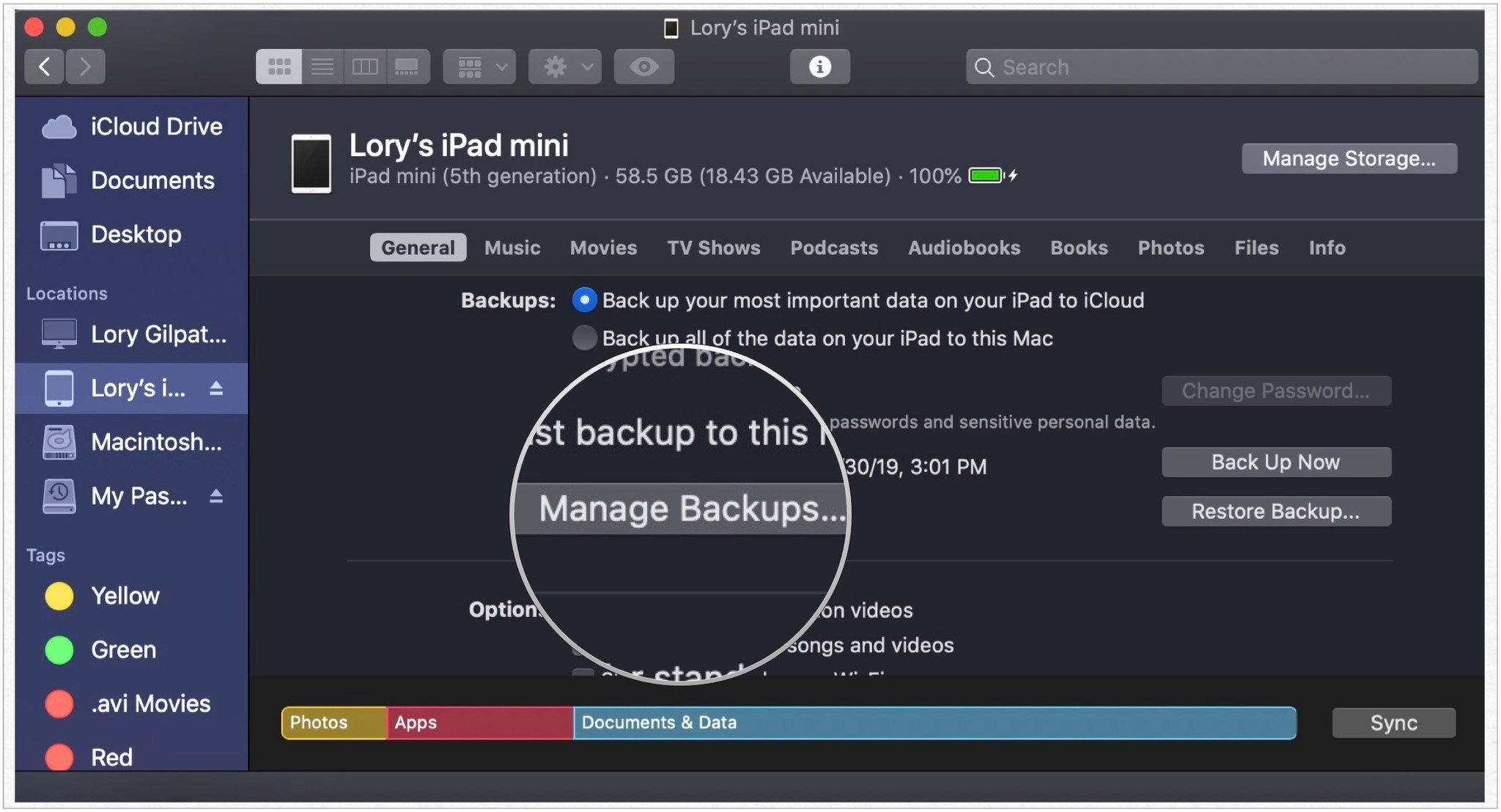
- Select a specific device
- Hold down the Control key and click on the device
- Select Show in Finder from the list of available options
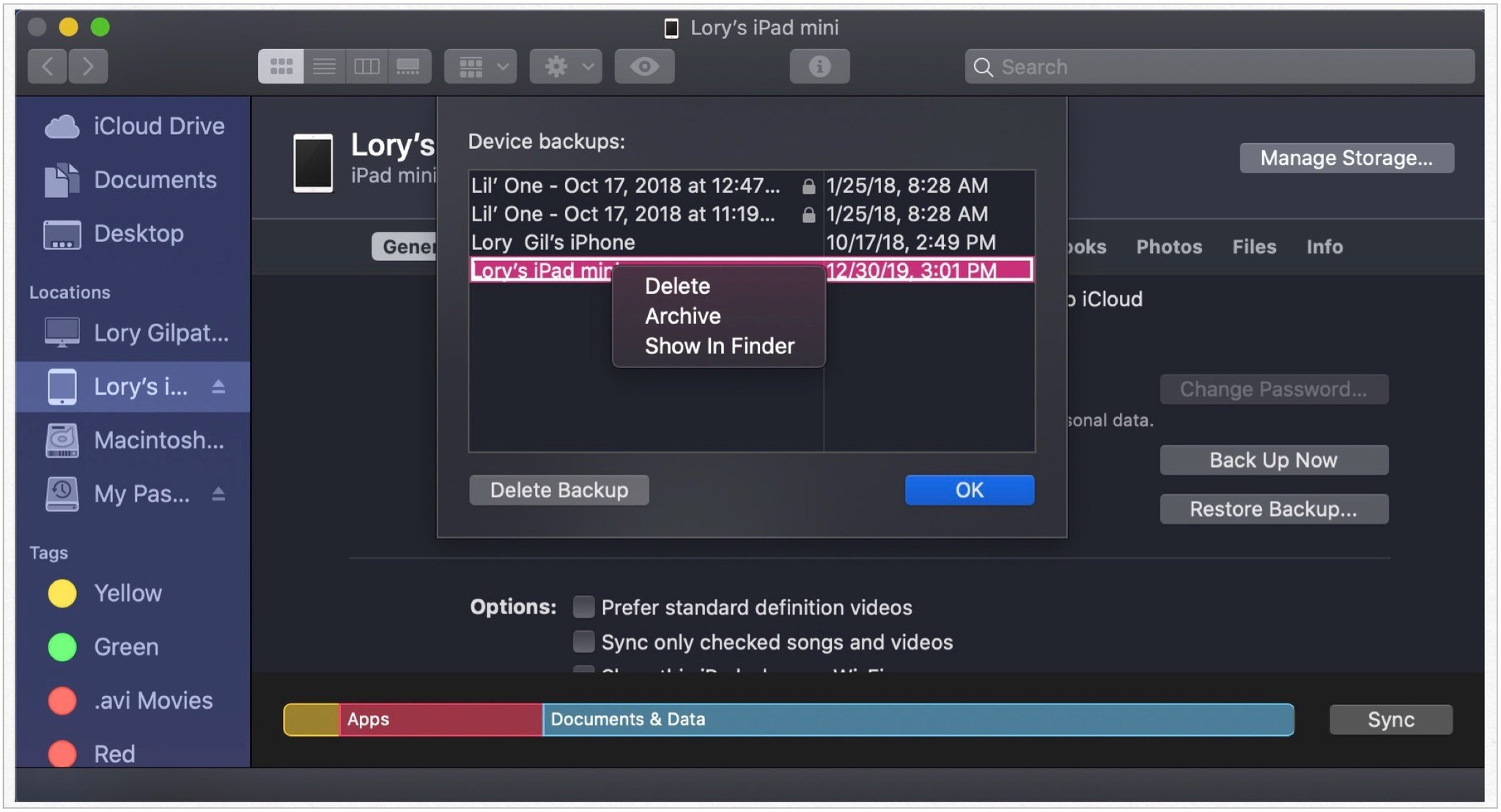
Step 2: Move your backups to an external hard drive
This part is easy, too. But you really have to pay close attention to the name of your hard drive and the new folder names you create, including punctuation and spacing. This information will be used when creating a Terminal pathway. If you use different terms than the ones suggested, replace them with the exact name you have in the Terminal command in Step 3.
- Connect your external hard drive to your Mac if it isn't already connected
- Open the external hard drive
- Go back to the Finder window with your iOS backups in it and select the device backup folder (It will either be called "Backup" or have a bunch of numbers and letters)
- Drag it to your external hard drive

- Enter your administrator password to authenticate your action
- Rename the iOS backup folder on your external hard drive to ios_backup. You may have to enter your administrator password once again to make this change
- Rename the old backup folder in Finder to old_backup
Do not delete the old_backup folder yet.

Step 3: Create a symlink to tell your computer the new location of your backups
This is the most complex and essential step to moving your iOS backups to an external hard drive. If you don't perform this step, your computer won't back up your iPhone or iPad anymore. You'll have to move the folders back to your Mac instead of manually.
In this step, you'll create a symlink — or symbolic link. When you create a symlink, you create a new path for Finder to get to the backups folder.
Former iMore writer and Mac genius Peter Cohen explains symlinks perfectly:
"Some applications don't follow aliases properly. An older way of creating those connections is more reliable for actions like what we want iTunes to do: Symbolic links, aka symlinks. They work at a low enough level that applications and operating system functions don't have as hard a time with them as they do aliases. We're going to use Mac's Terminal app to create a symbolic link to trick iTunes into backing up onto your external drive rather than the boot drive," Cohen said.
If you're using macOS Mojave or later, you will first need to change the permissions for Terminal on your Mac. Otherwise, you won't have permission to follow the remaining steps of this process. To do so:
- Open System Preference
- Select Security & Privacy
- Choose the Privacy tab
- Select Click the lock to make changes at the bottom left of the screen if this screen is locked. Otherwise, skip to Step 6
- Enter your system password and click Unlock on the popup screen
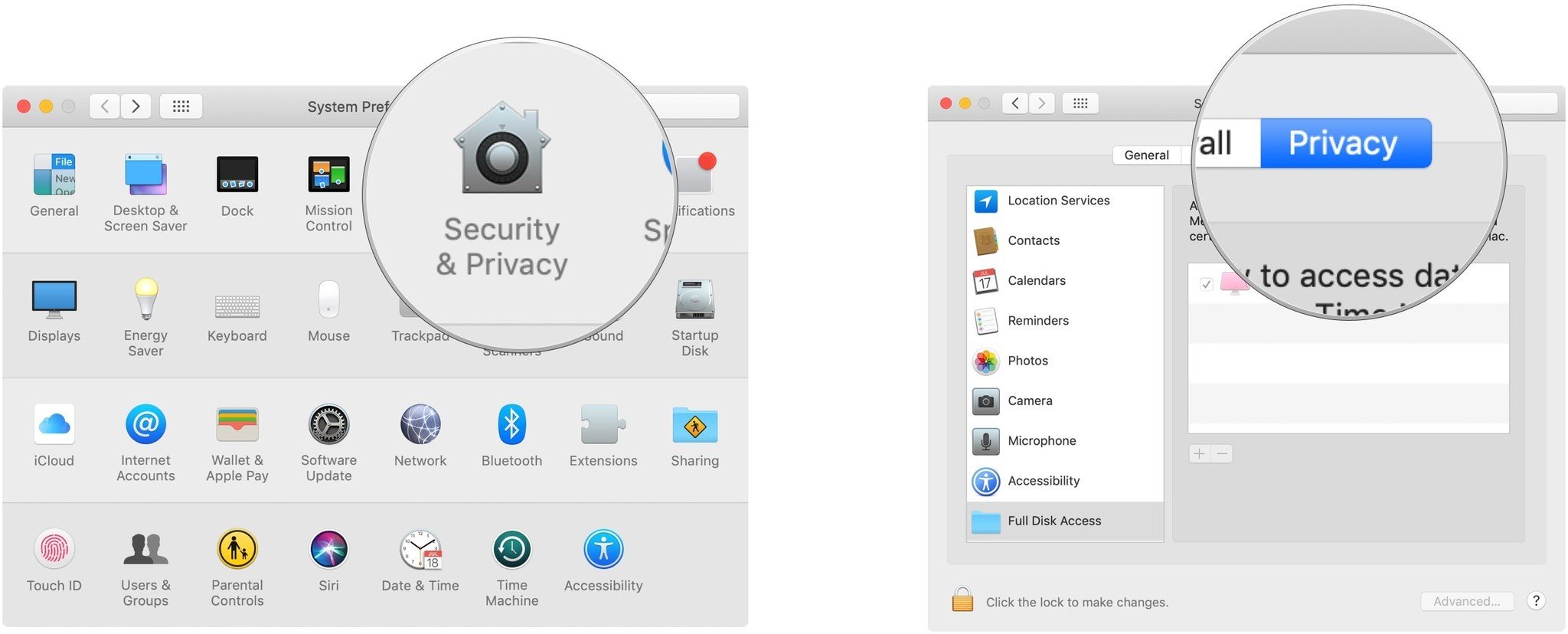
- Click Full Disk Access on the left-hand side of the screen
- Choose + to add Terminal to the list of apps with full control on your computer
- In the Finder screen that's displayed, type Terminal in the search box
- In the search results, highlight Terminal
- Tap Open
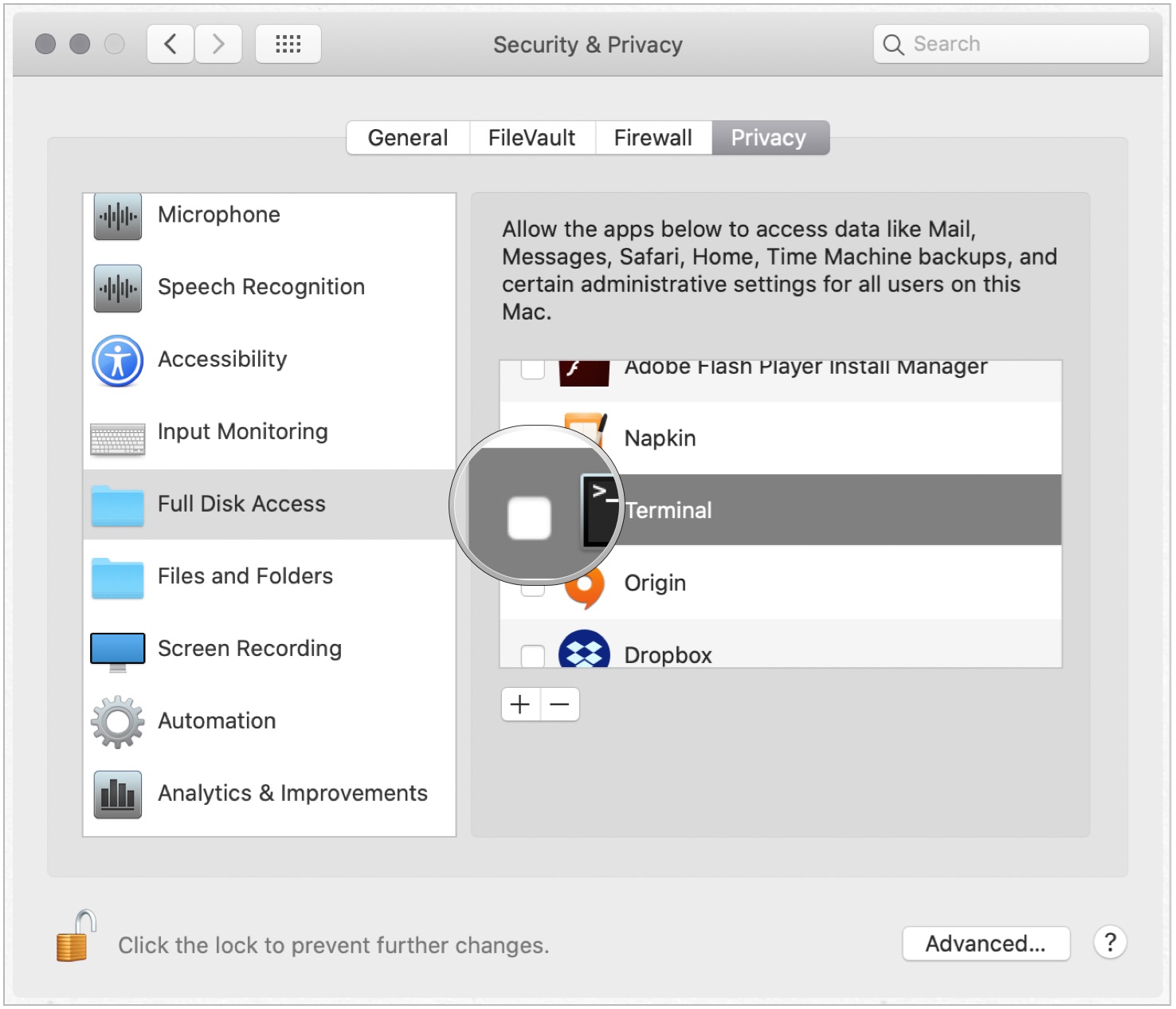
Next, a lesson in using Terminal. The proper pathway is critical for this to work. Every person's hard drive and backup folder names will be different. The following is the anatomy of the Terminal code we are using:
ln -s /Volumes/External/ios_backup ~/Library/Application\ Support/MobileSync/Backup/4f1234a05e6e7ccbaddfd12345678f1234b123f
- ln -s: This command tells the operating system to go to the new location. (This starts with a lowercase L, not a capital I.)
- Volumes: A hard drive.
- External: The name of a hard drive. Yours will likely be named something else. In the Terminal command, you must change "External" to whatever your external hard drive is called.
- ios_backup: The renamed backup folder you dragged into your external hard drive. This is the new place where your iOS backups will be stored.
- ~/Library/Application\ Support/MobileSync/Backup: This command tells the operating system where the backup is.
- 4f1234a05e6e7ccbaddfd12345678f1234b123f: The name of the device backup folder. If you are transferring all of your backups, this will just be named "Backup." If you are transferring one device, use the backup folder name for your device. The one above isn't even an actual file name. You must change the above backup folder name to the name of the folder you are transferring.
Use the proper coding if your external hard drive's name has space. For example, if your hard drive is named "My Passport," use a backslash after My, then Space, then Passport. Like this: My\ Passport. Remember to capitalize when necessary.
- Find Terminal using Spotlight
- Type the code below.Don't forget to change the hard drive name and the backup folder name to reflect the name of your hard drive and backup folder.
ln -s /Volumes/**External**/ios_backup ~/Library/Application\ Support/MobileSync/Backup/**4f1234a05e6e7ccbaddfd12345678f1234b123f**

- Hit Return
- Quit Terminal
You will see a new folder in your MobileSync folder called "Backup," or the series of numbers and letters representing your device. You can tell this is a symlink because it will have an arrow in the bottom left corner.
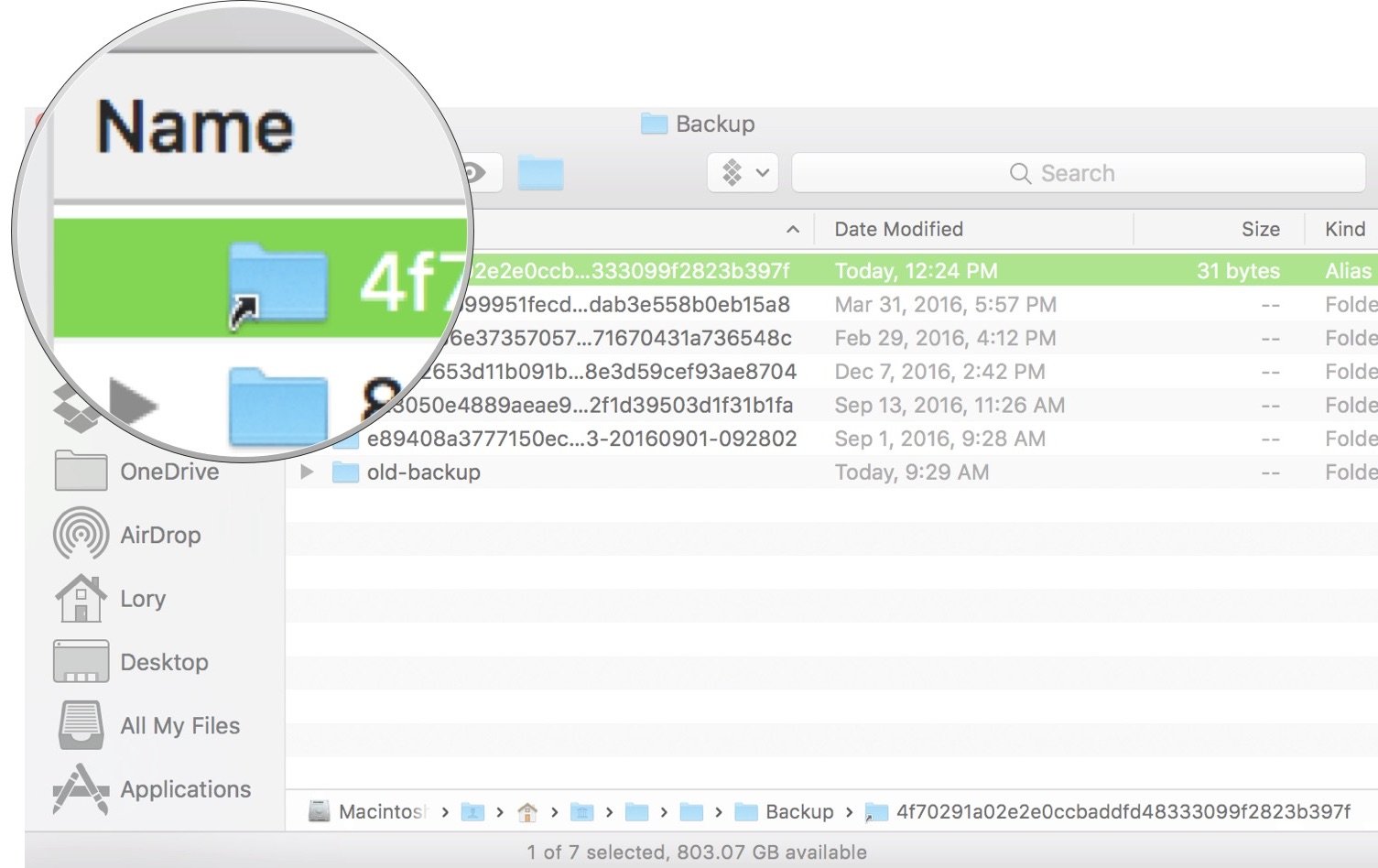
Next, you'll need to confirm that it worked before deleting your old_backup file on your Mac.
- Click Finder on your Mac's Dock
- Click on your device on the left side of the Finder window
- Click on Back Up Now on the General tab
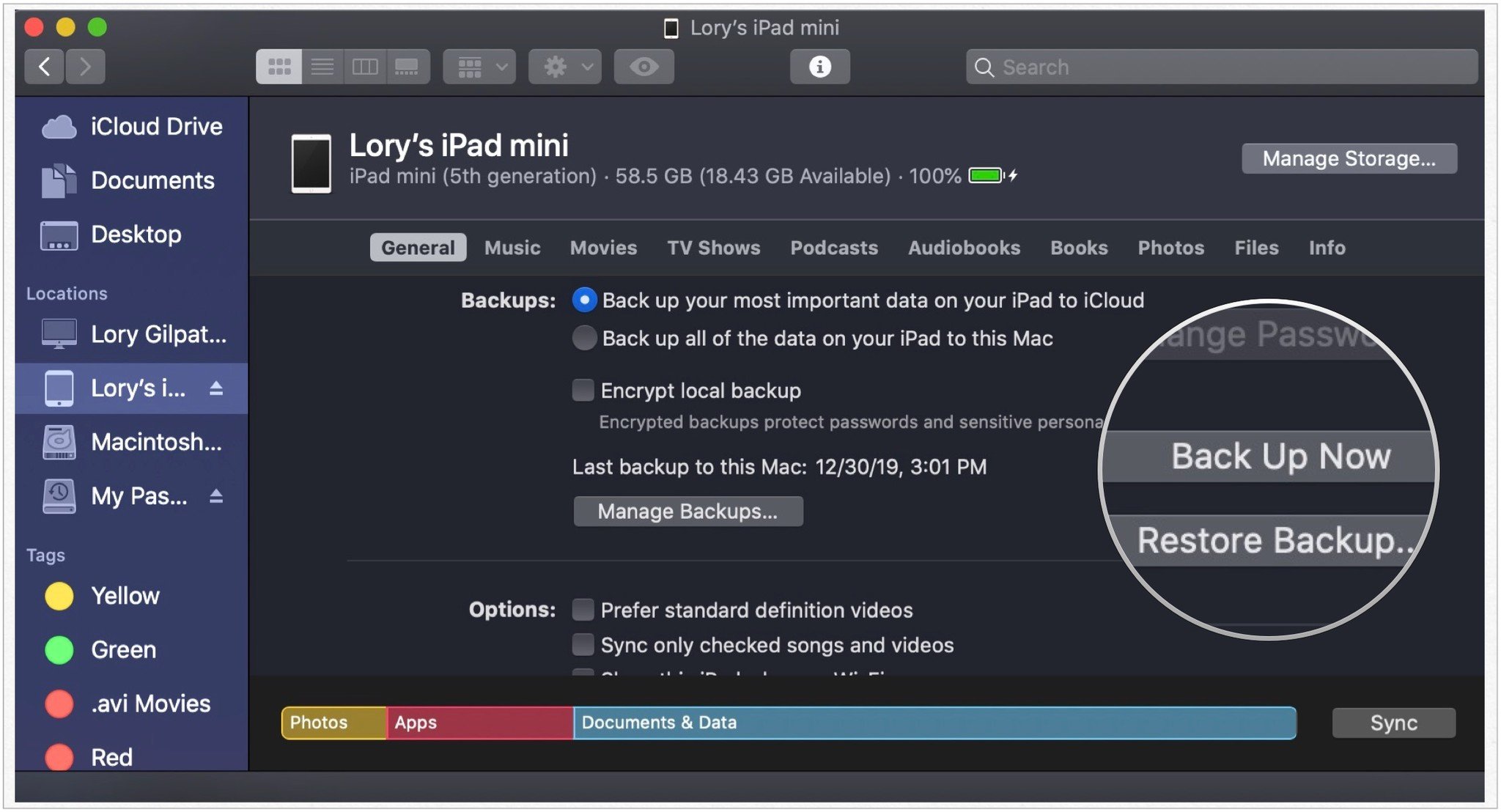
- Open the ios_backup folder on your external hard drive
- Check to see that the date and time on the latest backup are for the one you just completed
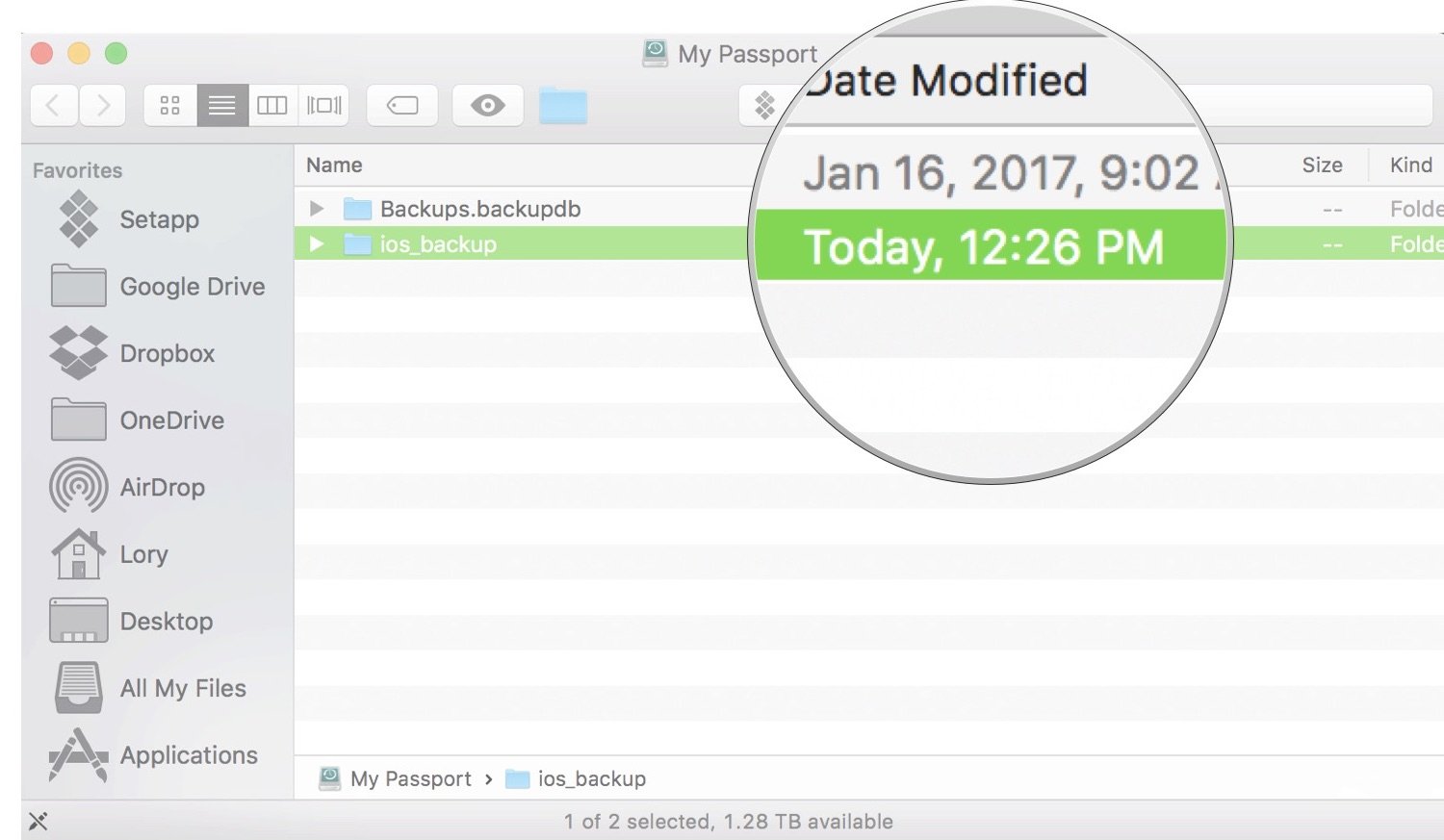
If the pathway relocation worked, and you can confirm that backups are now happening on your external hard drive, you can delete the old_backup folder on your Mac.
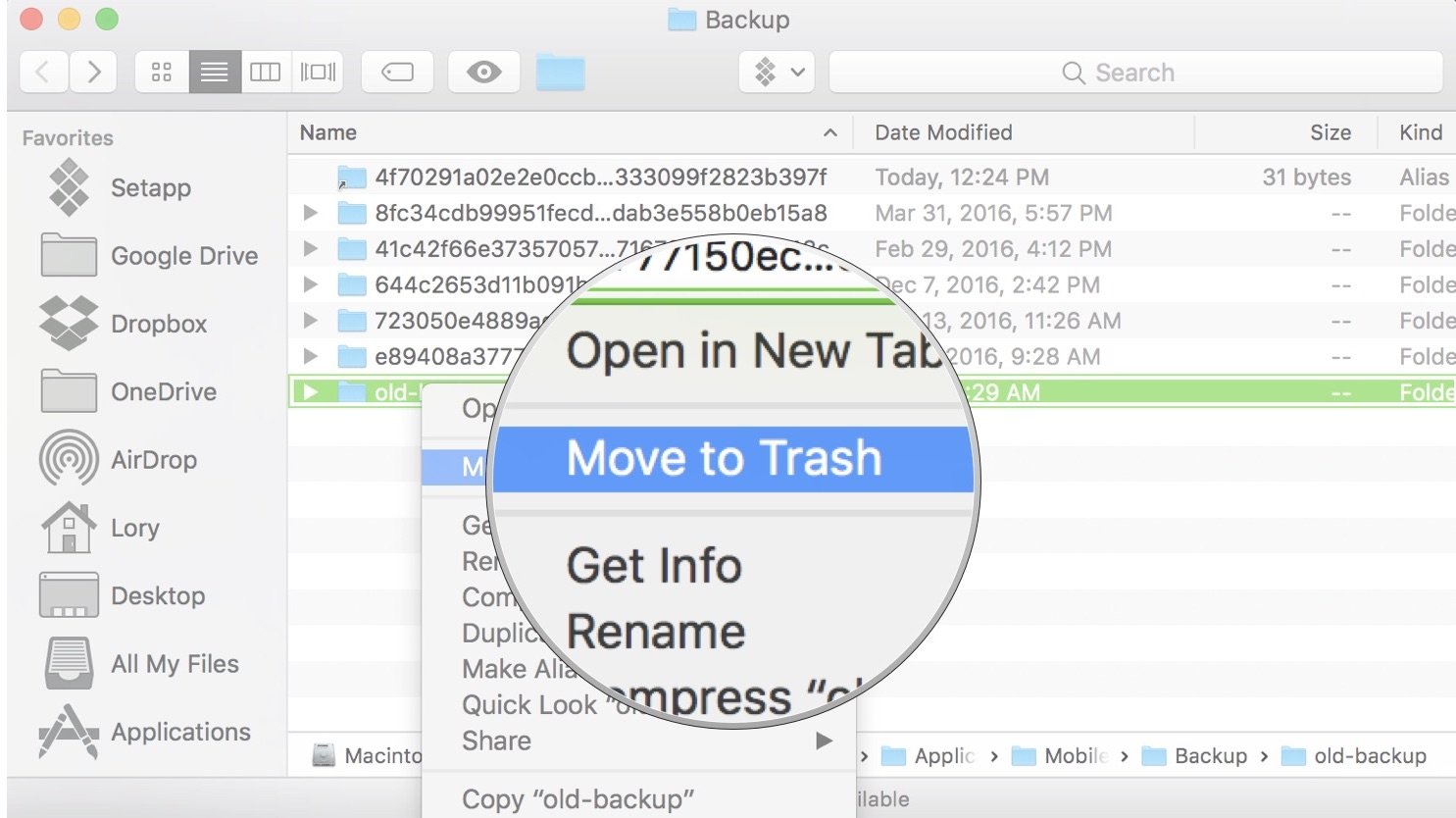
Note: If you go back to the MobileSync folder and open the symlink folder, you will see the files' names related to your backup. These are aliases, not actual files. It's like a thumbnail of a picture.
Step 4: Disable automatic backups when connected to your computer
If you don't always have an external hard drive connected to your Mac, you must disable automatic iPhone or iPad backups. Otherwise, you'll get an error when connecting your iOS device to your Mac.
- Click Finder on your Mac's Dock
- Click on your device on the left side of the Finder window
- Tick the box at the bottom next to Automatically sync when this iPhone is connected
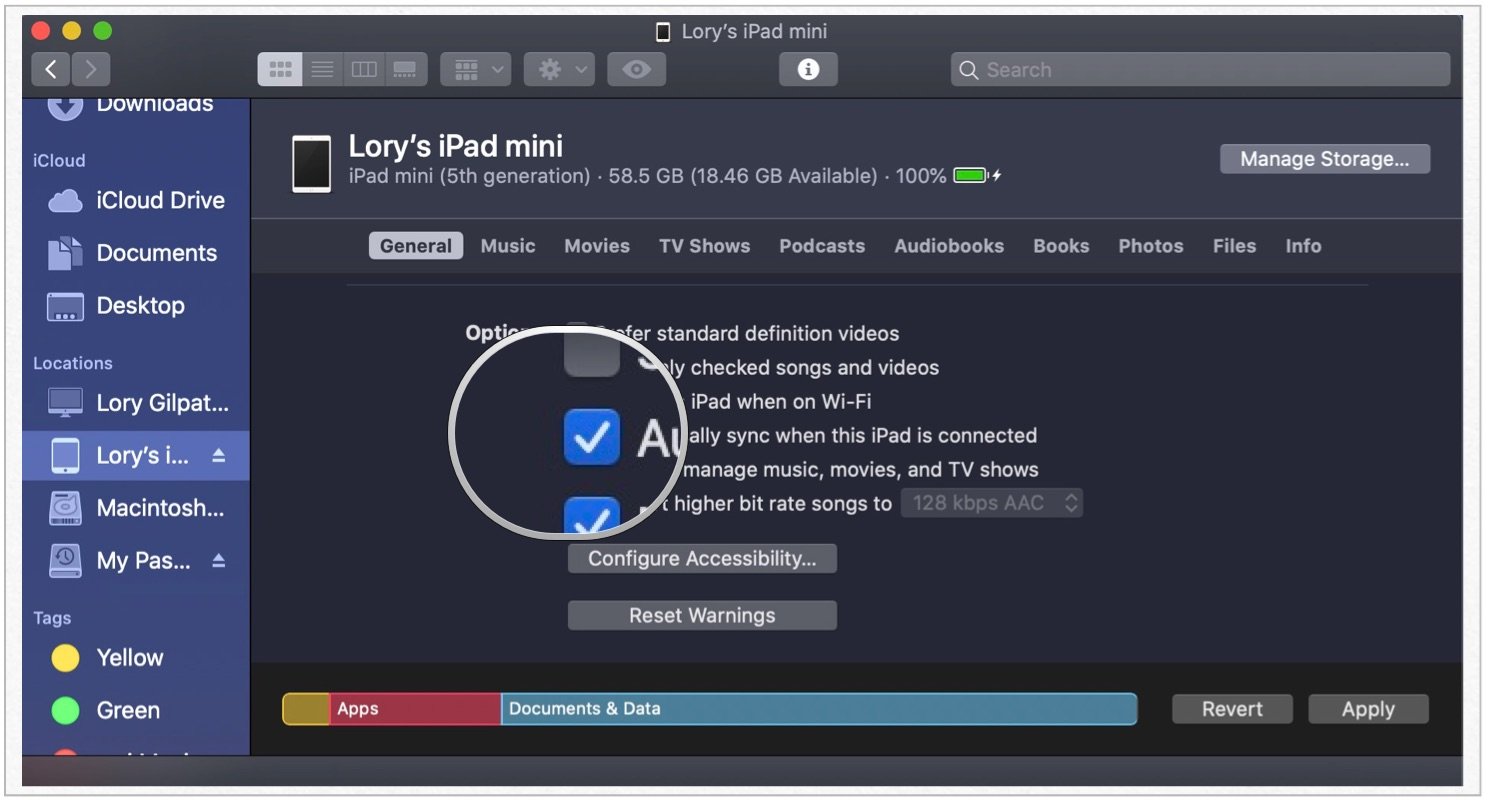
Remember to manually back up your iPhone whenever you connect it to your computer and have your external hard drive plugged in too.
How to restore the backup to your iPhone
Restoring an iPhone or iPad backup from an external drive requires moving the files back to the Mac.
- Connect your external hard drive to your Mac if it isn't already connected
- Open the external hard drive
- Go back to the Finder window and go to the device backup folder on your Mac, where the symlink file you created above is located. Our example above is located at ~/Library/Application\ Support/MobileSync/Backup/
- Drag the backup file on your external hard drive to the device backup folder
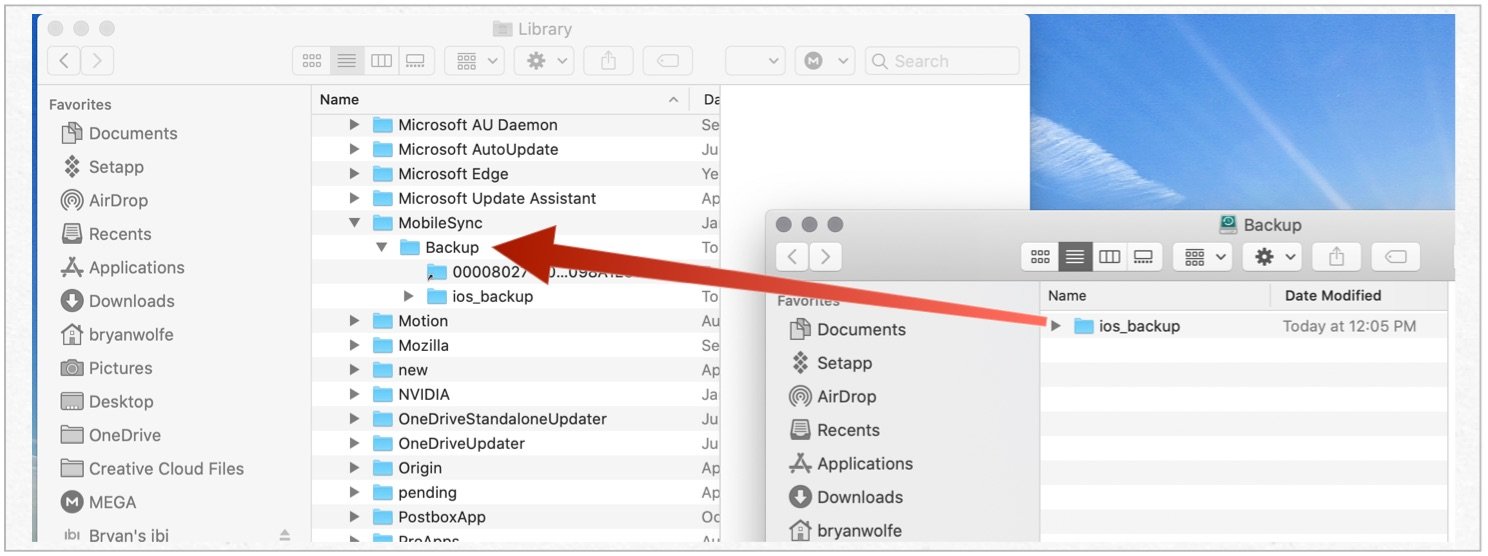
- Enter your administrator password to authenticate your action, if necessary
Depending on the size of your backup, this could take a long time. First, make sure you have enough space on your Mac. Next, you'll need to begin the restore process in Finder:
- Click Finder on your Mac's Dock
- Click on your device on the left side of the Finder window
- Click on Manage Backups on the General tab to confirm the backup you wish to use is present
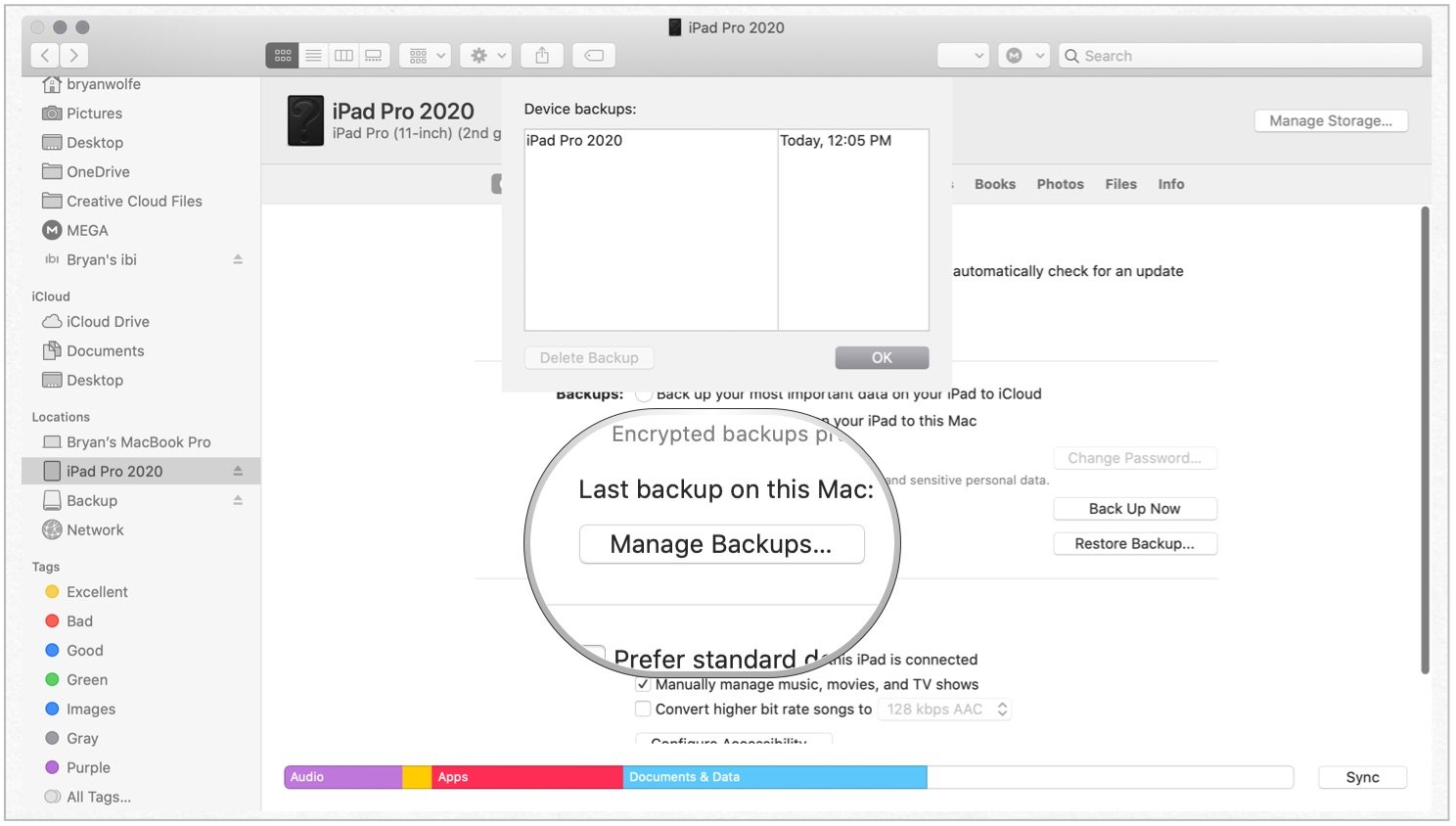
- Click OK to close the box
- Select Restore Backup
- Toggle the backup you wish to use in the pop-up box
- Click Restore
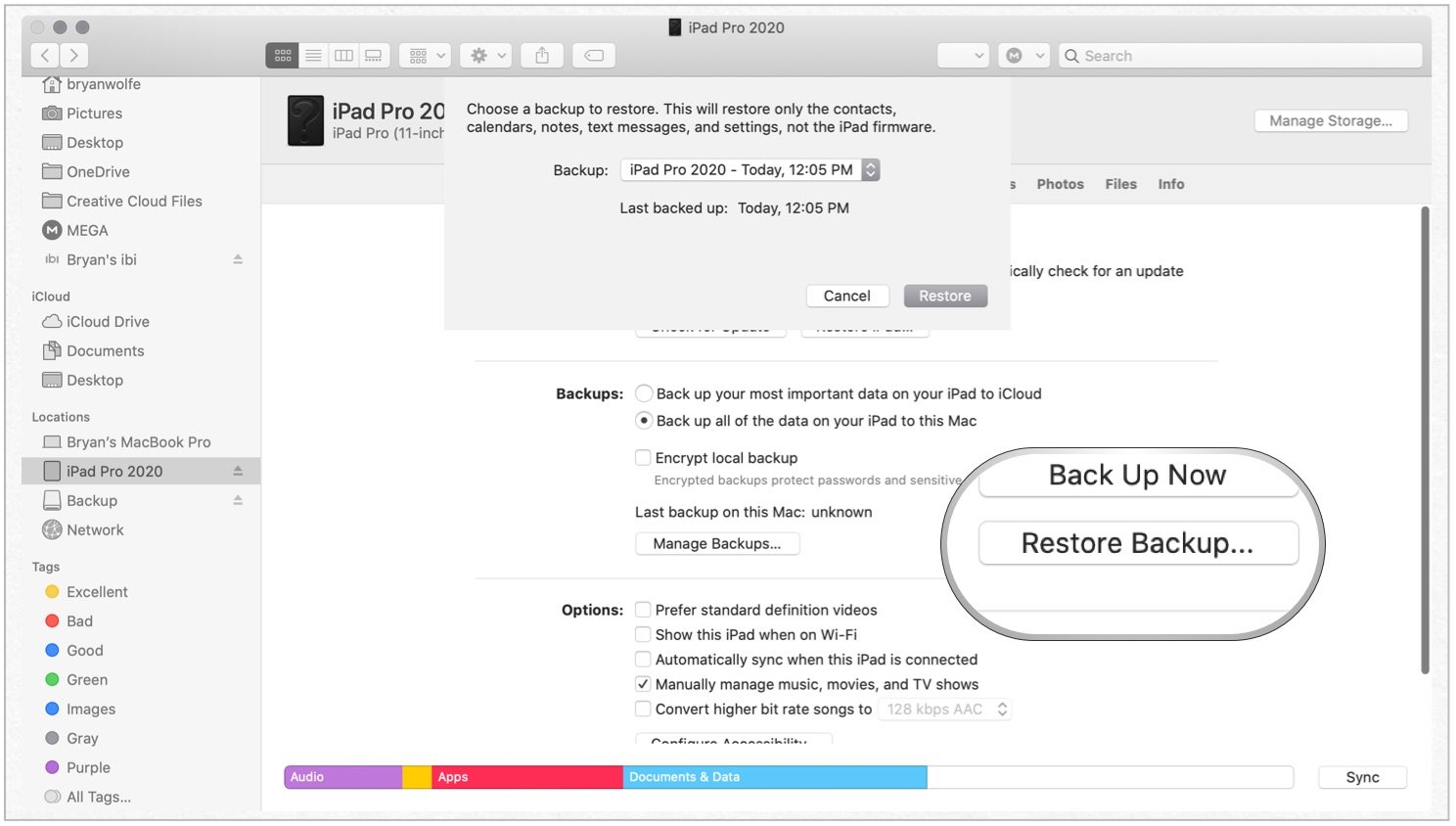
Your mobile device is now being restored. Once done, you may delete the backup folder you dragged to the Mac to save space. Otherwise, you'll now have two backups, the one you saved on the Mac and the other on the external drive that continues to be used for backup purposes.
How to remove the symlink and go back to storing your backups on your Mac
If you made a mistake and the symlink didn't work, or you want to go back to storing your backups on your Mac, all you have to do is delete the symlink folder you created—no need to enter any "rm" or "unlink" command in Terminal.
- Type ~/Library/Application Support/MobileSync/Backup into Spotlight
- Select the symlink folder. Remember, it's the one with an arrow in the bottom left. It will either be called "Backup" or have a series of numbers and letters representing your device
- Delete the symlink folder
- Back up your device via the computer
- Delete the ios_backup folder on your external hard drive (optional)

Lots of steps — perhaps a better solution
We strongly recommend against backing up your iPhone or iPad via Mac. Instead, consider using iCloud to keep copies of your files, as it works seamlessly across the Apple ecosystem. There are even other cloud storage apps and sites if you want to try another service other than iCloud, such as OneDrive. However, if you're still committed to going old-school, the above steps will help.

Bryan M. Wolfe has written about technology for over a decade on various websites, including TechRadar, AppAdvice, and many more. Before this, he worked in the technology field across different industries, including healthcare and education. He’s currently iMore’s lead on all things Mac and macOS, although he also loves covering iPhone, iPad, and Apple Watch. Bryan enjoys watching his favorite sports teams, traveling, and driving around his teenage daughter to her latest stage show, audition, or school event in his spare time. He also keeps busy walking his black and white cocker spaniel, Izzy, and trying new coffees and liquid grapes.
- John-Anthony DisottoHow To Editor
